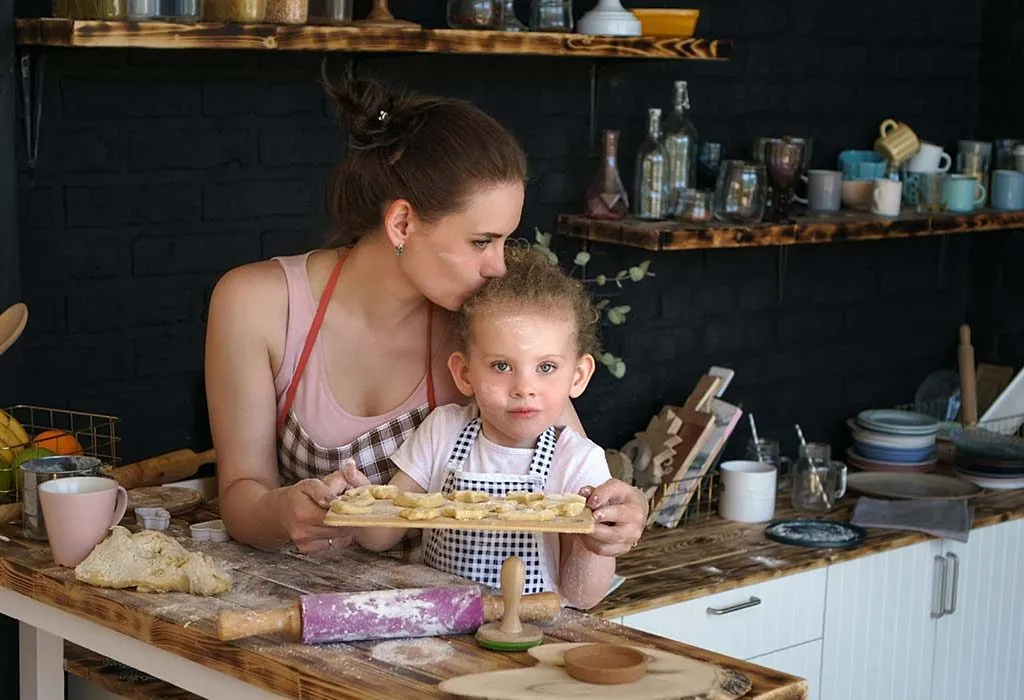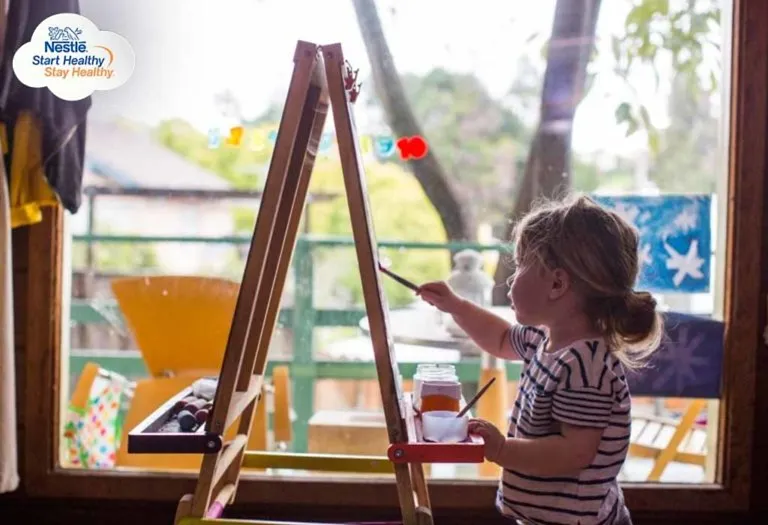How to Teach a Child Patience: Easy Ways and Activities

- What Does Patience Mean?
- Why Should You Teach Patience to Children?
- How to Teach Patience to Kids?
- Patience Activities for Children
- FAQs
Patience is one of the most essential qualities, making it a valuable lesson for a lifetime. In today’s fast-paced world filled with instant gratification, cultivating patience in children is more important than ever. Even adults struggle with patience, so it is even more important to instil the quality of patience in your child right from a young age. Fortunately, parents and educators can employ numerous easy ways and engaging activities to help children develop this essential virtue. One of the best ways how to teach a child patience is to be patient yourself and practice it daily. Keep reading to learn effective strategies and fun activities to foster patience in children, empowering them to become more resilient and adaptable.
What Does Patience Mean?
Patience is the ability to remain calm and composed despite adversity, delay, or frustration without becoming agitated or anxious. It involves maintaining a positive attitude and willingness to endure difficult circumstances or wait for something without getting restless or irritated. Patience allows children to gracefully tolerate uncertainty, setbacks, and obstacles, enabling them to persevere toward their goals and navigate challenges more effectively.
Why Should You Teach Patience to Children?
Children are not naturally inclined to be patient, and waiting in lines or sitting still when you take them out to dinner at a fancy restaurant can be a challenge. For everyone to have a more pleasant life, it is essential to teach your kids the importance of patience and help them practice it.
Today’s world is filled with instant gratification, and children almost never have to wait long. This makes it much more difficult to teach them how to be patient, as there is little chance for them to practice it.
Still, there are times when a child will need to learn to be patient, such as while waiting at the doctor’s or while waiting for her turn in a game. Teaching kids how to be patient is very important and should not be taken lightly. It will spare you and your child a lot of frustration in the future.
How to Teach Patience to Kids?
Teaching toddlers patience is an excellent idea, as it is never too early to start. Starting from a young age will make your children more likely to learn the concepts right from the beginning, making putting things into practice much easier for you and them. Here are tips to help:
1. Practice Patience
It is not easy to get the kids cleaned up, fed, and ready for school on time in the mornings, nor is it easy to get them to be on time for an appointment. In these situations, it is important that you practice patience so that your kids will have an example to look up to (2).
2. Start Small
Look for opportunities in your daily life to make the little one wait for something she wants. A minute or two is more than enough to start with; she will slowly learn about the concept of waiting, and as she begins to understand, you can increase the wait time to make her wait just a bit longer.

3. Maintain the Right Attitude
While modelling patience for your little ones, always remember to stay calm, smile, and try to positively tackle any unwanted problems, perhaps even thinking out loud so your children can join in the problem-solving. Being grumpy and complaining or rolling eyes should be avoided at all costs because this results in your children becoming more impatient, as they may be in a hurry to make you happy.
4. Make Use of Reflective Listening
When your child complains that she would rather be playing or doing something else than waiting, keep calm and encourage her to talk about her feelings. Take her seriously and try to come up with a solution.

5. Teach Delayed Gratification
Making your children wait a little while before giving them something they want will teach them to be more patient. For example, if you are washing the dishes and your child asks you to play with them, you can ask your child to wait until you are done and then play with them.
6. Stick to Your Timing
Instead of saying “in two minutes” and never following through, set a timer for the time you feel you will need and then stick to giving your little one attention when the time is up. A way to avoid giving time and being unable to follow through is to explain time to them through actions. For example, instead of telling them that dinner will be ready in 15 minutes, try telling them that dinner will be prepared once the potatoes are cooked.

7. Encourage Coping Mechanisms
If you know you will have to wait at a particular place, be prepared and carry some colouring books or fun distractions that your child will find interesting.
8. Acknowledge Patience
Patience is a skill, and when your child shows patience, you need to acknowledge and reward it so that your little one will be more encouraged to do it again. For example, if you take your child to the doctor’s office and your little one sits down with their colouring books to colour and does not fuss, you can always tell them how proud you are of their patience and good behaviour.

9. Enjoy Slow Activities
Play board games or indulge the kids in some crafts, such as origami, as they take much longer than fast-paced modern video games. Avoid giving your children your smartphone to keep them occupied, as this does the opposite of what you want it to. Sure, it will keep them distracted, but the games will teach them to become more impatient and distracted and will also not allow them to know how to cope without technology.
10. Turn Waiting Into a Game
A favourite among parents is playing ‘I Spy’ while waiting in line. This keeps the children from wandering off and allows them to take in their surroundings.

Patience Activities for Children
Simply explaining things to children does not have the same effect as having them experience it. Here are some activities and patience games for children:
1. Pass the Parcel
Imagine the excitement on their faces as they unwrap a present, layer by layer. This game of Pass the Parcel not only brings joy but also teaches them patience in a fun and interactive way.
2. Bake
Measuring the ingredients and waiting for the baked goods to cook through excellent requires patience from your child; of course, it comes with some scrumptious rewards.

3. Grow a Plant
Even after it is planted, a seed takes some time to grow into a plant, and your child will experience her hard work slowly bearing fruits.
4. Go Fishing
Fishing is an activity that requires a lot of patience as you wait for the fish to bite. If you do not want to harm any fish, you can always avoid using hooks and release the fish once caught.

5. Work on a Puzzle
Get a big enough puzzle to keep your child entertained for a while. Having to work on something for a while before seeing the results really builds a child’s patience.
6. Get Creative
If you must wait for a while, get creative with the little ones by asking them to come up with a story, but one where they must take turns and say only one sentence at a time. It should be a fun game for all of you, as kids can be creative sometimes.

7. Catch the Drizzle
This is a fun game to play when the monsoon is starting. Ask your little one to fill a bucket or mug full of rainwater when it drizzles. Waiting for the entire bucket or mug to fill will be a different and exciting way to teach them patience.
8. The Silent Game
Silence is golden, and it is an essential part of patience. Start the timer and ask the kids to sit still and be silent for as long as possible. The winner is whoever does it for the longest time.

9. Building With Building Blocks
Provide children with building blocks or construction toys and encourage them to build structures like towers, bridges, or houses. Emphasise the importance of patience and precision in constructing stable and balanced designs. Encourage children to experiment, problem-solve, and take their time to build something they’re proud of.
10. Nature Scavenger Hunt
Organise a nature scavenger hunt in a local park, garden, or nature reserve. Create a list of items for children to find, such as leaves, flowers, rocks, or specific types of plants or wildlife. Encourage them to explore their surroundings patiently, using their observation skills to locate each item on the list. Remind them to take their time and appreciate the beauty of nature as they search for each item.
FAQs
1. At what age can I start teaching patience to my child?
Teaching patience can begin at a young age, as early as toddlerhood. Simple activities like waiting for a turn, playing games with rules, or engaging in calming exercises can help toddlers understand the concept of patience and its importance (1).
2. How can I encourage patience in my child during everyday activities?
You can encourage your child’s patience during everyday activities by setting clear expectations, modelling patience yourself, and providing positive reinforcement for patient behaviour. Break tasks into smaller steps, offer praise for waiting calmly and provide distractions or alternatives to help them manage waiting times.
The best way to understand the most effective way of teaching your child how to be patient is by pinpointing what triggers their impatience in the first place. Does your child find it difficult to take turns? Does your little one become frustrated while practising something new? Does your child get frustrated by puzzles? Knowing what triggers your child is vital in helping them learn to be patient and keep a level head in any situation. For example, if your child gets frustrated while trying something new, you can patiently show them how it is done, giving you the additional benefits of bonding with your child. Patience for kids is a valuable skill that fosters resilience, emotional regulation, and the ability to face challenges calmly and with determination, setting the foundation for their long-term success and well-being.
References/Resources:
1. Patience is learned. Here’s how to teach your kids to wait.; University of Michigan; https://lsa.umich.edu/psych/news-events/all-news/faculty-news/patience-is-learned–here-s-how-to-teach-your-kids-to-wait-.html
2. Durham. S; Why Teach Kids Patience and How to do it; South African College of Applied Psychology; https://www.sacap.edu.za/blog/applied-psychology/why-teach-kids-patience-and-how-to-do-it/
Also Read:
How to Teach a Child to Share?
Good Manners to Teach Your Kids
How to Teach Your Kid to Behave Well?
Essential Life Lessons to Teach Your Child
Was This Article Helpful?
Parenting is a huge responsibility, for you as a caregiver, but also for us as a parenting content platform. We understand that and take our responsibility of creating credible content seriously. FirstCry Parenting articles are written and published only after extensive research using factually sound references to deliver quality content that is accurate, validated by experts, and completely reliable. To understand how we go about creating content that is credible, read our editorial policy here.
























